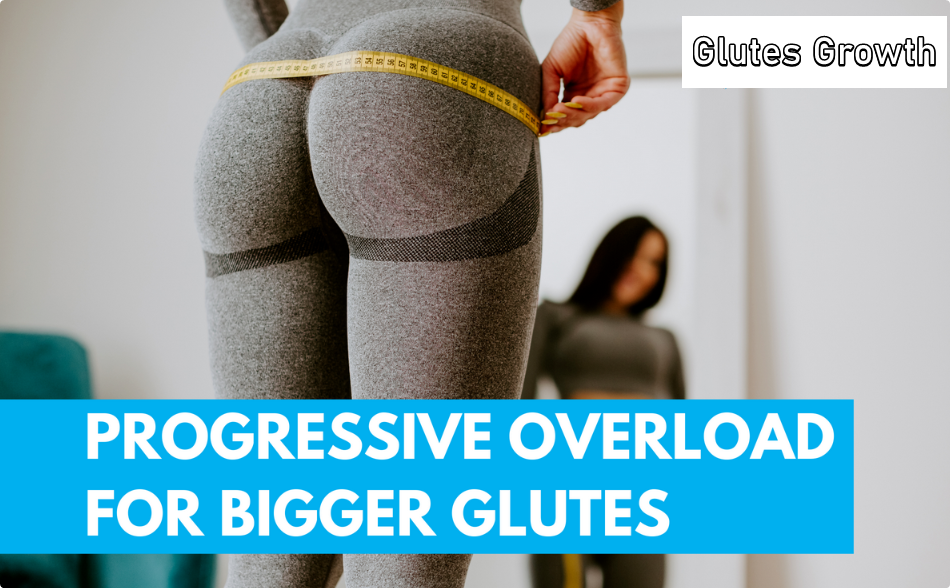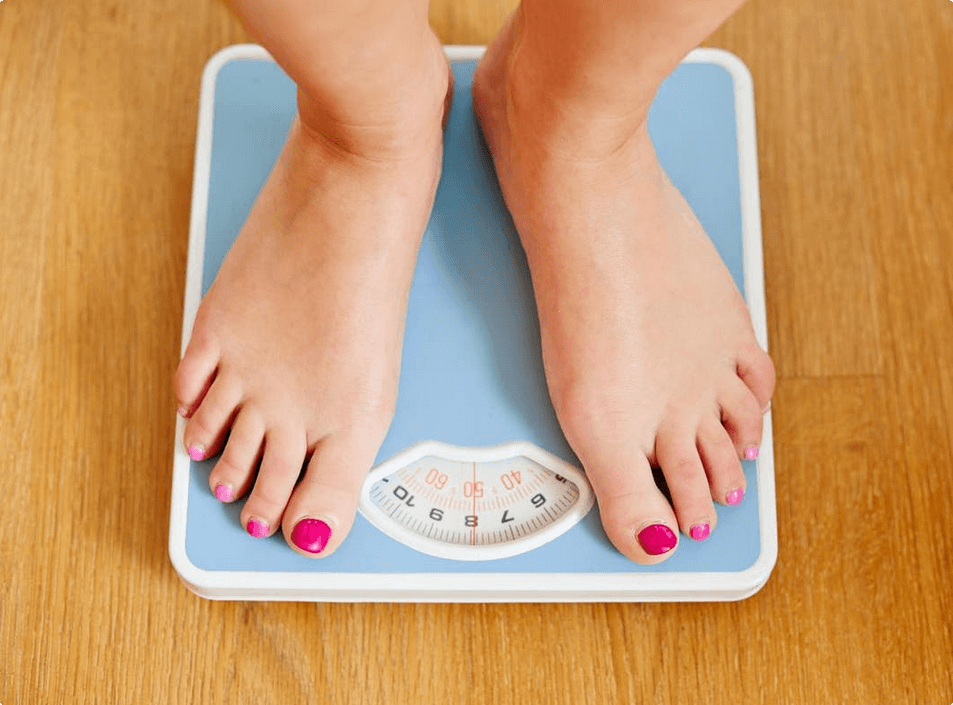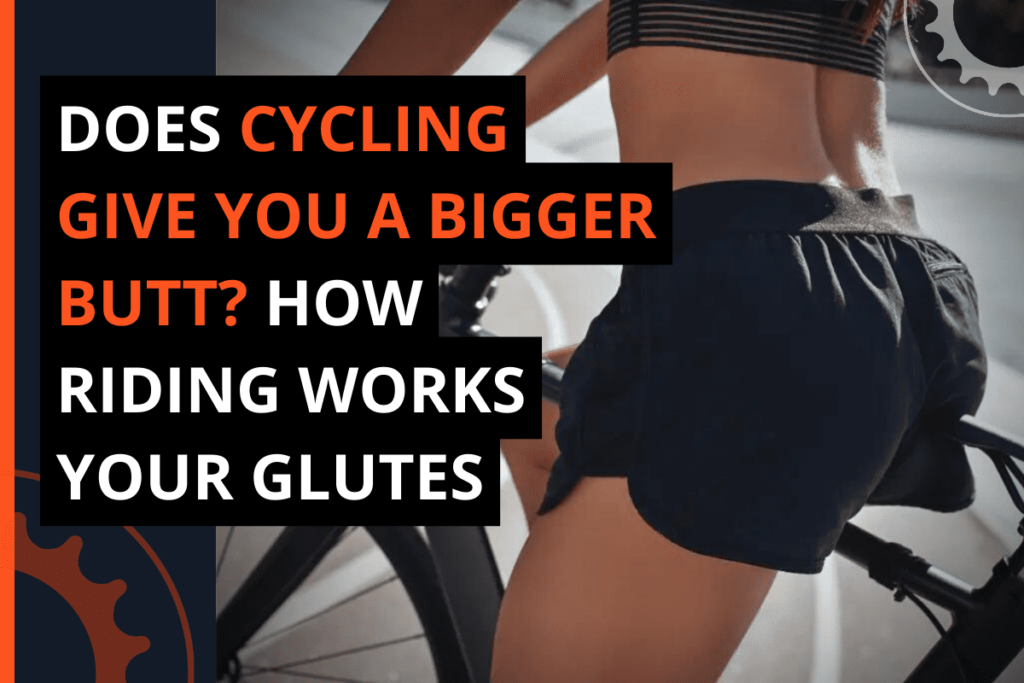Are you on a mission to sculpt and strengthen your glutes while also making a positive impact on the lives of others? Well, you’re in luck!
We’ve got the perfect workout strategy for you that will not only give you the perky peach of your dreams but also empower you to be the best version of yourself.
Say hello to progressive overload, a fitness technique that’s all about gradually increasing the stress placed on your muscles during workouts, which results in better strength and aesthetic gains.
Progressive Overload Glutes
Now, we know what you’re thinking – how does this help me serve others? The answer is simple: when you’re feeling strong, confident, and balanced (all benefits of having powerful glutes!), you’re more likely to approach life with enthusiasm and positivity. This energy is infectious and can inspire those around you to strive for greatness too.
So, buckle up as we explore the world of progressive overload for glutes, where we’ll provide tips and tricks to level up your booty game while harnessing your inner strength for the greater good.
The Science Behind Progressive Overload
Muscles grow, strength increases, and endurance improves – all through the magic of progressive overload.
It’s the fundamental principle behind any effective fitness program, especially when targeting the glutes. However, there are plenty of overload misconceptions that can lead people astray from achieving their goals.
Understanding how progressive overload works and sifting through the muscle confusion myths will empower you to create a glute-focused workout plan that delivers results.
Many people believe in the concept of muscle confusion as a way to achieve continuous progress.
They constantly change exercises, rep ranges, and intensity levels in hopes of tricking their muscles into growth spurts.
While variety is valuable in any training regimen, it should not come at the expense of consistency and dedication to long-term progression.
The truth is that muscles adapt to stress placed upon them; by gradually increasing this stress over time (i.e., progressive overload), our glutes become stronger, more resilient, and better able to serve others—whether it be helping someone carry heavy groceries or lifting a friend’s spirits with a compliment on our toned derrière.
Progressive overload doesn’t have to involve complex equations or elaborate schemes; it can be as simple as adding extra weight or reps each week.
Consistent effort toward incremental progress is far more effective than sporadic bursts of creativity in your workouts.
By focusing on small but meaningful improvements over time, you’ll build strong and powerful glutes that not only look great but also make you an invaluable asset in serving those around you.
So let’s dive deeper into understanding the importance of strong glutes and how they contribute significantly to overall health and wellbeing.
Importance Of Strong Glutes
The importance of strong glutes cannot be overstated in today’s world, where we often find ourselves sitting for extended periods.
Not only do toned and powerful glutes enhance your overall physique, but they also play a crucial role in maintaining proper posture and supporting the lower back.
For individuals driven by a desire to serve others, having strong glutes can make all the difference in performing physical tasks more efficiently and preventing injuries.
Injury prevention is one of the primary reasons to focus on strengthening your glutes.
By developing well-rounded muscles in this area, you can reduce the risk of lower back pain, knee problems, and hip issues that may otherwise hinder your ability to assist those around you.
Additionally, strong glutes enhance your athletic performance and improve balance—essential components for anyone aiming to lead an active lifestyle or participate in physically demanding activities.
Let’s not forget about glute aesthetics; a firm and shapely posterior can boost self-confidence and make you feel great both inside and out.
As you embark on this journey towards achieving stronger glutes through progressive overload techniques, remember that consistency is key.
With determination and dedication to your workouts, you will soon enjoy the numerous benefits of having powerful glute muscles that not only look good but also support your body’s overall health and function.
Now that we’ve discussed the importance of having robust glute muscles let us explore how to begin our exciting journey towards transforming our posterior into a powerhouse.
Starting Your Glute Training
Eons ago, ancient gladiators understood the importance of a strong lower body for their survival in the arena. Today, you too can benefit from focusing on your glutes to improve overall strength and enhance your ability to serve others.
Starting your glute training may seem daunting at first, but with the right approach and dedication, you’ll soon see progress that will help you carry out tasks with ease, prevent injuries and feel more confident in your daily activities.
Before diving into your workout sessions, it’s essential to understand the importance of glute activation for injury prevention.
Activating your glutes ensures that these muscles are engaged properly during exercises and reduces the risk of straining other parts of your body.
As you embark on this journey, consider incorporating these exercises into your routine:
-
Warm-up exercises:
- Bodyweight squats
- Glute bridges
- Clamshells
-
Glute activation exercises:
- Fire hydrants
- Monster walks
- Banded lateral walks
Remember that consistency is key – incorporating these movements regularly will help establish a solid foundation for more advanced exercises later on.
As you build strength and confidence in your workouts, take note of how much easier everyday tasks become.
From carrying groceries to playing with children or helping someone move furniture, a strong set of glutes allows you to serve others more effectively while also keeping yourself healthy and injury-free.
Now that you have an idea of some basic exercises to include in your glute training routine, it’s time to explore how implementing progressive overload techniques can further enhance your strength and performance.
So let us proceed to unveil those methods that will bring out the best in both our bodies and our service-oriented mindset!
Implementing Progressive Overload Techniques
Increasing resistance is key when it comes to progressive overload, so gradually adding weight is important.
Changing repetitions can also help, whether it’s fewer or more sets.
Modifying exercise variations can help shock the muscles and prevent plateaus.
It’s important to remember to only increase one of these variables at a time.
You don’t want to overdo it and get injured.
Over time, the goal should be to keep progressing to see results.
Increasing Resistance
You might be wondering, ‘How do I increase resistance to make my glute workouts more effective?’ Well, it’s actually easier than you’d think! There are various resistance variations that can be employed to ensure your glutes get the maximum benefit from your workouts.
Remember, our goal is not only to improve our physical appearance but also to serve others by being strong and capable individuals.
One excellent way of increasing resistance for optimal glute activation is by incorporating different types of equipment into your routine.
Resistance bands, ankle weights, and barbells are just a few examples of tools that can help you push your limits and achieve noticeable results.
For instance, if you’re used to doing bodyweight exercises such as squats or lunges, try adding a resistance band around your thighs or holding a dumbbell in each hand.
This added resistance will force your glutes to work harder during each rep, leading to increased strength and growth over time.
Another great strategy for upping the ante on your glute workouts is by altering the tempo of your exercises.
You can play with slowing down the eccentric phase (lowering portion) of an exercise or incorporating pauses at the peak contraction point.
These techniques require greater muscular control and endurance, which translate to enhanced muscle development in the long run.
So next time you hit the gym or workout at home, consider implementing these tips for improved glute activation – you won’t regret it!
Changing Repetitions
Now that we’ve explored how to increase resistance and manipulate exercise tempo for better glute activation, let’s dive into the world of changing repetitions.
Just like with any other muscle group, your glutes can greatly benefit from rep variations when implementing progressive overload techniques.
This will not only keep your workouts fresh and exciting but also challenge your muscles in new ways that promote growth, ultimately making you a stronger and more capable individual.
Playing around with rep ranges allows you to target different aspects of muscular development. For example, performing higher reps with lighter weights can improve muscular endurance, while lower reps with heavier weights can lead to increased strength gains.
By incorporating a mix of both in your glute workouts, you’ll ensure well-rounded progress and encourage optimal glute activation at all times.
Don’t be afraid to experiment – try alternating between high-rep days and low-rep days or even incorporating drop sets or supersets for an added challenge.
Incorporating rep variations into your training routine is yet another way to make the most out of your glute-focused exercises.
Challenge yourself by exploring different rep ranges and watch as your glutes grow stronger in response to these new stimuli.
Remember, the key to effective progressive overload is continually pushing your limits – so switch it up, stay engaged, and enjoy the journey towards becoming an even more powerful version of yourself!
Modifying Exercise Variations
As you continue to explore the realm of progressive overload techniques, it’s important not to overlook the power of modifying exercise variations.
By changing up the exercises you perform, you can target different aspects of glute activation and development, ensuring that your progress doesn’t plateau.
Besides keeping things interesting, experimenting with new movements will also help you discover what works best for your body and unlock your full potential.
One way to incorporate exercise progression into your routine is by advancing from simpler to more complex movements.
For example, start with a basic glute bridge and gradually progress towards single-leg bridges or even weighted hip thrusts.
Another option is to modify familiar exercises like squats or lunges by adding bands or weights, changing foot placement, or incorporating instability elements such as a BOSU ball.
By consistently challenging yourself with new exercise variations and pushing beyond your comfort zone, you’ll be well on your way to maximizing glute activation and unlocking your true strength capabilities.
Embrace the process of growth and discovery – after all, it’s in service of becoming an even better version of yourself!
So go ahead and get creative; there are no limits when it comes to optimizing your workouts for peak performance.
Choosing The Right Exercises
Now that you’re well-versed in the importance of progressive overload and various techniques to implement it, let’s move on to selecting the most effective exercises for your glute training.
This is a crucial step in your journey towards achieving stronger, healthier glutes, which not only have aesthetic benefits but also play a significant role in injury prevention and overall body function.
An essential aspect of choosing the right exercises for your glute training is prioritizing movements that promote glute activation.
To fully engage and work these muscles, opt for compound exercises such as squats, deadlifts, hip thrusts, and lunges.
These multi-joint movements require multiple muscle groups to work together, ensuring that your glutes are adequately targeted during each exercise.
Additionally, incorporating isolation exercises such as cable kickbacks or glute bridges will help you focus on specific areas of the glutes and further enhance muscle development.
Another key factor to consider when selecting exercises is injury prevention.
It’s important to choose movements that not only challenge your muscles but also protect your joints and connective tissues from potential harm.
Be mindful of form and technique while executing each exercise; this will minimize the risk of injury while maximizing gains.
To put all this newfound knowledge into practice and get those glutes working overtime, start by creating a well-rounded workout plan consisting of both compound and isolation exercises tailored to your specific goals.
Following this approach will set you up for success in developing strong, powerful glutes – all while keeping injuries at bay!
Next up, let’s dive into how tracking your progress can further enhance your training results.
Tracking Your Progress
One essential aspect of progressive overload for glutes is tracking your progress. By monitoring your advancements, you can adjust your workouts and continue to challenge your muscles effectively.
Progress monitoring also helps to keep you motivated and dedicated to achieving those well-rounded glutes that not only look great but serve a functional purpose in assisting others.
Goal setting plays a significant role in tracking your progress. Having specific targets in mind allows you to stay focused on the reason behind all the hard work – whether that’s improving strength or enhancing physical support when helping others.
Break down your goals into smaller, achievable milestones, and celebrate each accomplishment along the way.
This strategy will help maintain momentum as you work towards your ultimate objective while also providing a sense of fulfillment knowing you’re making strides in bettering yourself.
As you monitor your progress and achieve your goals, it’s crucial not to become complacent with the results.
Keep challenging yourself by increasing weights, incorporating new exercises or adjusting current ones, and modifying workout intensity.
By continuously pushing yourself beyond what’s comfortable, you’ll ensure ongoing growth and development for those powerful glutes.
Next up, we will discuss how to avoid plateaus and overtraining so that you can safely continue on this journey toward becoming an even more helpful force in the world around you.
Avoiding Plateaus And Overtraining
Meet Jane, a devoted fitness enthusiast who was religiously working on her glute exercises. She began to notice that despite maintaining the same workout intensity and frequency, her progress started to plateau.
Frustration set in, and she doubled down on her efforts but still couldn’t break through the plateau. This is when Jane realized that she needed to focus on plateau prevention and watch for overtraining symptoms.
To avoid hitting a plateau like Jane did, it’s essential to incorporate progressive overload into your glute training regimen.
This means gradually increasing the challenge of your workouts by adjusting factors like weight, reps, sets, or even exercise selection.
By doing this, you’ll continually challenge your muscles and force them to adapt and grow stronger.
Additionally, be mindful of overtraining symptoms such as persistent soreness or fatigue, decreased performance or motivation, insomnia, irritability or mood swings as these could indicate that you need to give your body more time for recovery.
Remember that while it’s crucial to push yourself during workouts, it’s equally important to listen to your body and allow adequate rest between sessions.
Striking this balance will not only help you break through plateaus but also prevent burnout or injury.
With consistent effort and smart training strategies in place, you’ll be well on your way towards building stronger glutes and inspiring others with your fitness success story – one squat at a time!
Inspiring Others Through Fitness Success
Sharing your fitness motivation and success stories can have a profound impact on those around you.
It’s not only about inspiring others but also creating a sense of camaraderie and support within the fitness community.
When you share your journey, whether it’s through social media or in person, you’re giving others the opportunity to learn from your experiences, take inspiration from your achievements, and become motivated to start their own healthy lifestyle changes.
The power of success stories lies in their relatability. People are more likely to be inspired by someone who has faced similar struggles and overcome them than by an unattainable ideal.
By opening up about the challenges you’ve faced, the setbacks you’ve overcome, and the personal growth you’ve experienced along the way, you’re showing others that it’s possible for them too.
Your story could be just what someone needs to hear to spark their own transformation.
So don’t hesitate to share your fitness journey with others.
You never know whose life you might touch or even change for the better simply by sharing your experiences and insights.
Your fitness motivation can create a ripple effect that reaches far beyond yourself, empowering others to pursue their own health goals and ultimately fostering a community of individuals striving for progress together.
Embrace this opportunity to serve others through your accomplishments – not only will it enrich their lives, but it may very well inspire you to push even further in your own pursuits as well.
Frequently Asked Questions
After reading everything about progressive overload for your glutes, maybe you still have some questions, so here are some of the FAQs that you might be interested in.
How long does it usually take to see significant changes in glute strength and size when following a progressive overload program?
When following a progressive overload program focused on glute activation and incorporating overload variations, significant changes in glute strength and size can usually be seen within 8 to 12 weeks.
This time frame may vary for each individual based on factors such as consistency, genetics, and nutrition.
By staying committed to the process and pushing through those challenging workouts, you’ll not only enhance your own physical capabilities but also improve your ability to help others who rely on your support.
Are there any specific nutritional guidelines to follow in order to support glute growth and strength during a progressive overload program?
To support glute growth and strength during a fitness program, it’s essential to maintain a nutritional balance that fuels your body for optimal performance.
Prioritize your protein intake, as it plays a crucial role in muscle repair and growth. Aim for a daily intake of around 1.6 to 2.2 grams of protein per kilogram of body weight, incorporating sources like lean meats, fish, dairy, legumes, and plant-based proteins.
Don’t forget to include complex carbs for energy and healthy fats for overall well-being. By nourishing your body with the right nutrients, you’ll not only be serving yourself but also empowering others through your commitment to health and fitness.
How can i effectively target the different parts of my glutes (upper, lower, and side glutes) using progressive overload techniques?
To effectively target the different parts (upper, lower, and side glutes), it’s crucial to use a mix of glute activation techniques and isolation exercises that put the spotlight on each hero.
For instance, focus on deep squats or lunges for lower glute engagement, hip thrusts or bridges for upper glute activation, and lateral band walks or clamshells for those mighty side glutes.
By incorporating these exercises in your progressive overload routine, you’ll not only strengthen your superhero squad but also help them be better prepared to serve others with grace and power.
Can progressive overload be applied to other muscle groups or is it specific to glute training?
Absolutely! Progressive overload can be applied to any muscle group, not just glute training. This powerful technique aids in enhancing strength and muscle growth across various body parts.
By consistently challenging your muscles with new exercises, increased weight, or additional repetitions, you’ll experience improved activation and development in multiple areas of your physique.
Overload variations provide an engaging way to switch up your workout routine while still serving your ultimate goal—building a stronger, healthier body that’s ready to help others when needed.
So go ahead and incorporate progressive overload into all aspects of your fitness journey for maximum results!
How can I balance my progressive overload glute training with other fitness goals, such as cardiovascular health or flexibility?
Don’t worry, finding balance in your fitness routine is absolutely possible!
To effectively combine progressive overload glute training with other fitness goals like cardiovascular health and flexibility, it’s important to strategically plan your workouts.
Start by incorporating glute activation exercises into your warm-up routine to ensure proper muscle engagement during strength training.
Be mindful of overload pitfalls, like excessive weight or poor form, which can hinder progress and lead to injury.
Additionally, dedicate time for cardio sessions that support heart health and aerobic endurance while also serving others by participating in charity races or group fitness classes.
Finally, make flexibility a priority by incorporating stretching or yoga into your weekly schedule to improve mobility and reduce the risk of injury.
By carefully planning your workouts and focusing on each aspect of fitness, you can achieve well-rounded results without sacrificing any of your goals.
Conclusion
In conclusion, incorporating progressive overload in your glute training can be highly effective for both strength and size improvements.
While it may take time to see significant changes, staying consistent with your program and following proper nutritional guidelines will help you achieve your goals.
Don’t worry about neglecting other fitness aspects, as progressive overload can be applied to various muscle groups and balanced with cardiovascular exercises and flexibility training.
Give it a try and experience the benefits for yourself!





